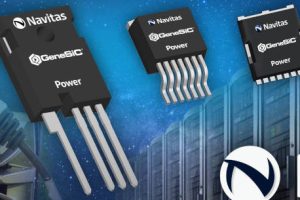Hamamatsu Photonics has created an x-ray image sensor for real-time non-destructive testing and digital radiography. C16401SK-51 has 1,272 x 1,104 pixels, a photo-sensitive area of 140 x 122.8mm, and uses cmos sensing with a GOS (gadolinium oxysulfide) scintillator. “This combination ensures optimal performance and reliability, even when used with x-ray tube voltages of up to 160kV, making it suitable for ...
Products
The latest Electronics Weekly product news, ranging from Analogue and Asics to Software and Test.
Circular data connectors for rugged conditions
Bulgin is extending its range of circular data connectors for rugged conditions, including Ethernet, USB and HDMI (pictured) interconnects. Aimed at harsh environments – such as industrial automation and wind and solar energy applications – the connectors have a rating of up to IP69K when mated, and are available in multiple cable lengths and mounting options. Specifically, there will be ...
5W surface-mount current sense resistors
A new selection of materials has allowed Rohm to add 5W rated current sensing resistors to its 2512 sized (6432 metric) PMR100 series of metal plate shunts, formerly rated at either 2 or 3W only. They are available in 0.5, 1 and 1.5mΩ. “Adopting a proprietary trimless structure suppresses the rise in temperature caused by localised current concentration. This allows ...
PCIM: Navitas optimises SiC for speed
Navitas Semiconductor has made fast versions of its Gen-3 650 and 1,200V silicon carbide mosfets, branded ‘G3F’ and available in packages including D2PAK-7 to TO-247-4. “We’re pushing the boundaries of SiC, with up to 600kHz switching speeds said company v-p of technology Sid Sundaresan. One proposed application is in continuous-conduction-mode totem-pole power factor correction (CCM TPPFC) circuits up to 10kW in ...
PCIM: 600V silicon mosfets from Infineon, and GaN from 200mm wafers
Infineon has announced a flurry of new power products as a prelude to PCIM in Nuremberg next week, the latest of which is a family of 600V super-junction mosfets. Its eighth generation, “the devices combine the best features of the 600V CoolMOS 7 series and are the successors to the P7, PFD7, C7, CFD7, G7 and S7 product families”, according ...
PCIM: GaN motor drive eval kit from CGD and Qorvo
Cambridge GaN Devices (CGD) has teamed up with Qorvo to build a GaN-based evaluation kit for controlling brushless-dc and permanent magnet synchronous motors. From Qorvo comes its PAC5556A motor control IC that combines a 150MHz Arm Cortex-M4F processor and 128kbyte of flash, with 600V gate divers, PWMs and multi-chanel data conversion. CGD is providing its IC-based GaN power hemts that ...
6U Xeon D-2800 VPX processor for military radar
Kontron is aiming at military radar with is latest 6U VPX plug-in computer card, based around Intel Xeon D-2800 or D-2700 processors. Called VX6096, it includes VITA48.8 through-flow air cooling to allow operation over -40 to +55°C or, on request, -40 to +70°C (FC3) or even -40 to +85°C (CC-4). “The VITA 48.2 Type 2 conduction-cooled version can withstand card edge temperatures ...
Solder paste for all-tin soft soldering
Emil Otto is aiming at joining steel, stainless steel, brass and copper objects below 450°C with three tin-based soft-soldering pastes. “The soldering and tinning pastes do not require zinc chloride, are therefore not subject to hazard labelling and can be used for soft soldering and tinning,” according to the company. “Zinnin Green pastes are used in the metalworking industry as ...
Five reasons to consider a SOM vs a chip-down design
The growing interest in exploring modular hardware instead of a traditional chip-down approach requires an understanding of the pros and cons of each approach, say James Jaksich and Camron Chilton. There are five key benefits of a system-on-module (som) approach, which will help engineers through the make vs buy decision process. Flexibility Standards defining size, connectors and interfaces play a ...
Making the right choice for embedded boards
The plethora of off-the-shelf boards available for development and production can make a bewildering choice. Engineers need to bear a number of criteria in mind, advises Simon Wade. There are many choices facing embedded systems developers who want to use off-the-shelf boards for development and production. There are numerous offerings based around the Arm architecture alone. The open licensing policy ...
 Electronics Weekly Electronics Design & Components Tech News
Electronics Weekly Electronics Design & Components Tech News









